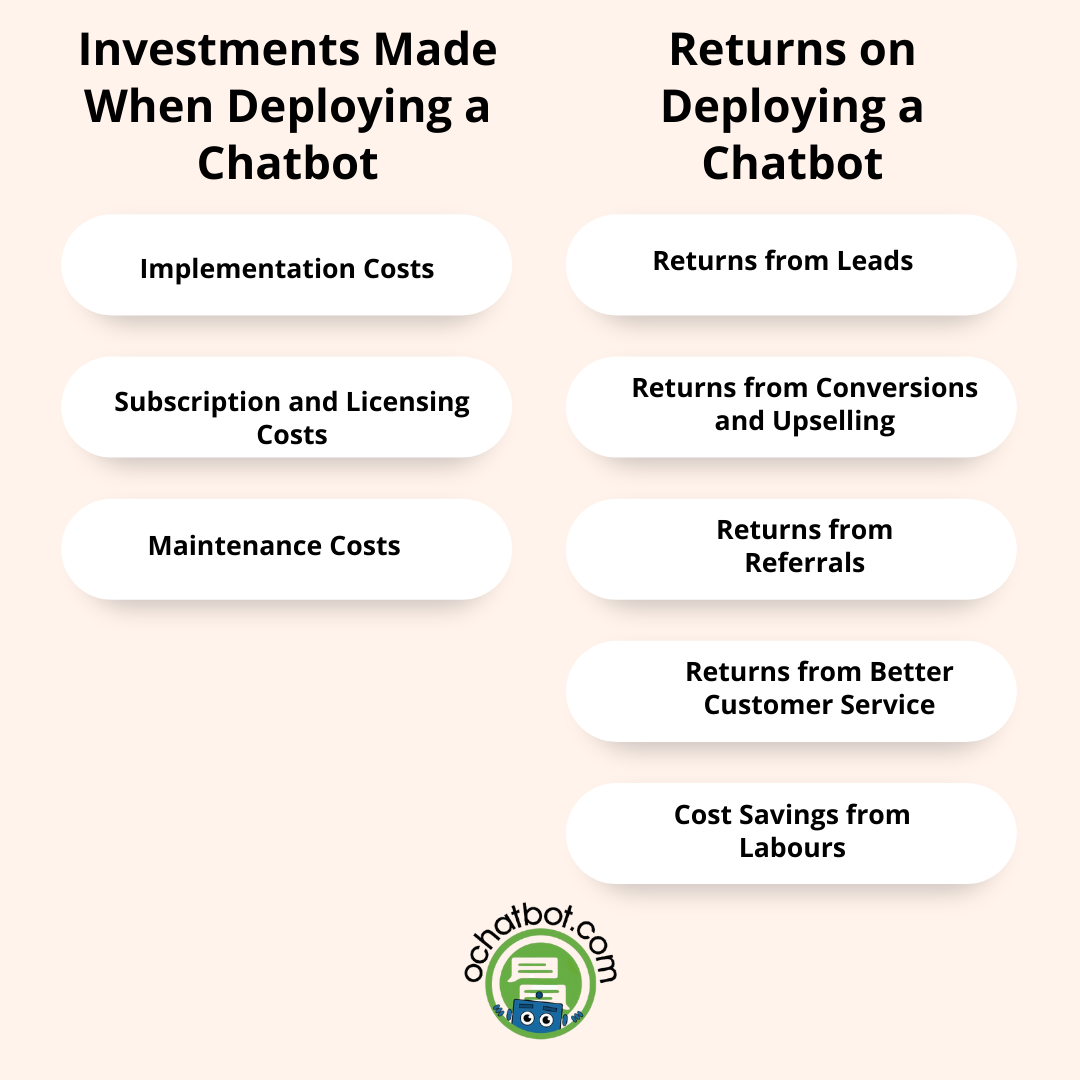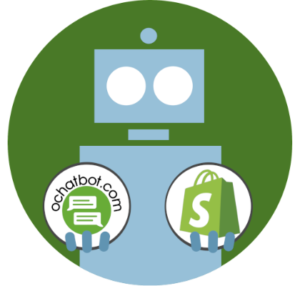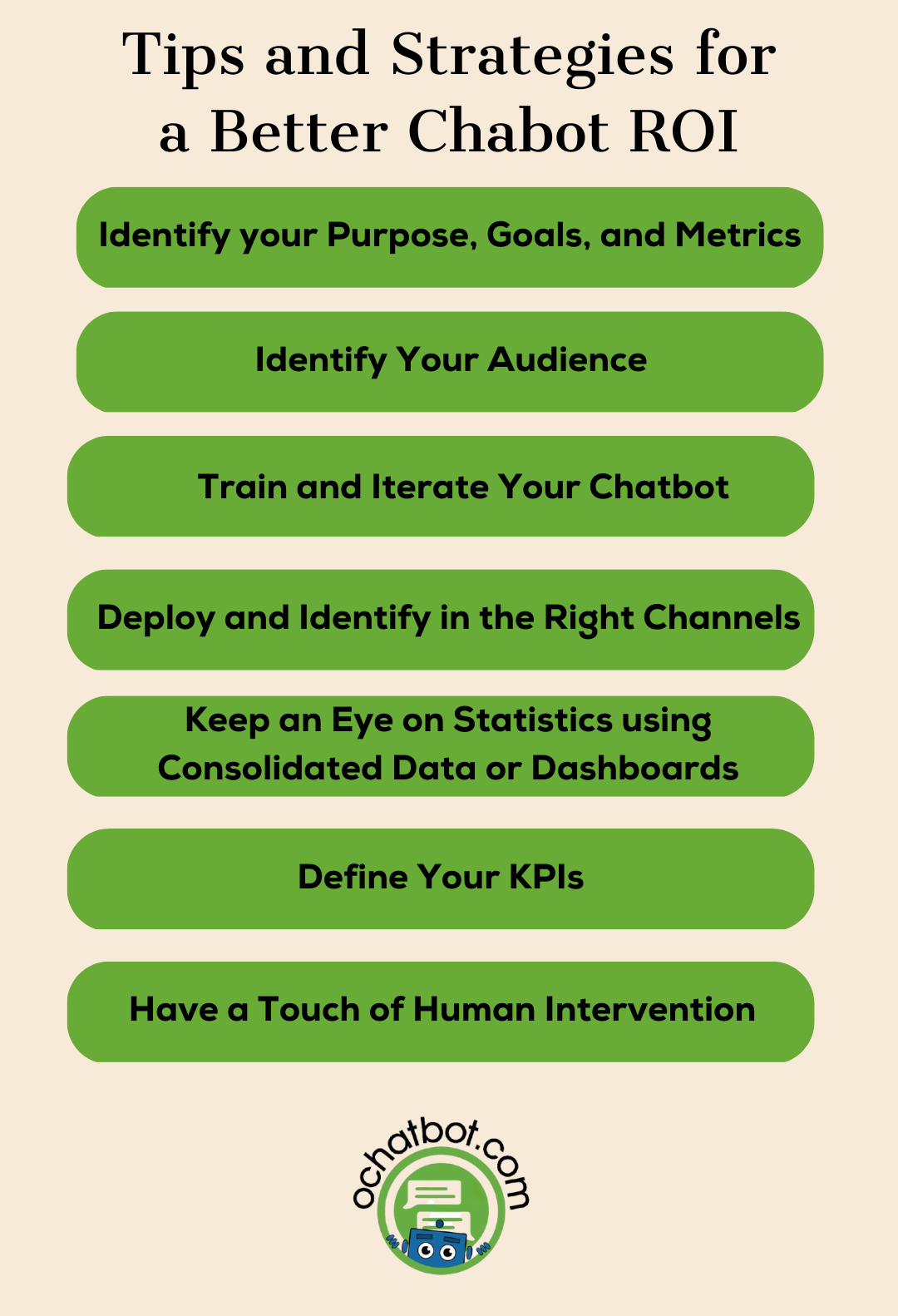However, even after deploying your chatbot and formulating a strategy, if you don’t see any substantial rise in your AI chatbot ROI, you might be missing some important details in your chatbot and your engagement strategy.
In this article, let us discuss some tips and strategies to maximize your AI chatbot ROI to help your business upscale and grow.
What is AI Chatbot ROI?

Chatbot ROI is a term used to describe/measure the returns vs. the cost of deploying the chatbot.
According to Investopedia, Return On Investment (ROI) is defined as the measure of returns in correspondence to the investments made. This is a very common metric in any business which shows the efficiency of the investment made and the processes in your business. In simpler terms, to calculate the ROI, that particular return on the investment is divided by the investment made.
ROI is important because it gives you insights to make better management decisions, formulate better marketing strategies, insights on budget, and understand your customer expectations.
So, what are some ways investments for a chatbot are made? And what are some ways the returns from employing a chatbot are calculated?
Investments Made When Deploying a Chatbot
In any business or firm, it is fairly easy to calculate the investments made to perform a certain operation. For example, in a manufacturing setup, the cost of manual labor, the cost of machinery, the investments made in raw materials, and other miscellaneous costs might be counted as the investments made to complete the said process and see returns. But when it comes to employing a chatbot, there are some aspects that are considered investments, predominantly depending on your requirements.
Implementation Costs
Implementing a chatbot on your website or application might involve some professionals to help you streamline and centralize your process. This is one of the important investments made as cheap development costs might cause problems in the long term while offering lower functionality and fewer features.
Subscription and Licensing Costs
Most chatbot providers will have a subscription and licensing fee. This fee might vary depending on the features, the time of subscription, and also depending on the platforms they will be deployed to. Generally, the subscriptions and licensing costs made for your chatbot are disclosed upfront when deploying them.
Maintenance Costs
Any digital device or system needs to be appropriately maintained, for proper and efficient functioning. Chatbots also need proper maintenance. Employing teams of professionals including developers and data analysts help iterate your bot to understand the user requirements, and function faster and better.

Returns on Deploying a Chatbot
After deploying a chatbot on your website or process, the chatbot starts working to its purpose. In addition to just calculating the financial revenue made out of your sales process, there are additional factors that can be considered as returns from the chatbot.
Returns from Leads
AI chatbots can gather better leads and prospects by nurturing them from their stand as a visitor, guiding them through their funnel journey, and converting them into potential customers. This can be attributed to a chatbot’s 24/7 availability and ability to engage customers generally in a better way than with a live agent.
Returns from Conversions and Upselling
Conversions and upselling are important metrics of returns as they are directly related to revenue profits. Conversions are made when a customer buys a product – and with this loyal base, AI chatbots help upsell your products and increase the profit margins. If your product and services are good, customers will want to try more of your product, maybe in larger quantities or with added features.
Returns from Referrals
Most buyers will want to know what other people feel about your product. Satisfied customers tend to bring in more customers either through word of mouth or through positive reviews. This in turn leads to more customers and increased engagements.
Returns from Better Customer Service
The concept of employing a chatbot is often aimed at providing better customer service. Honing your customer service and customer engagement to provide the best experience for your customers can more likely lead to a purchase and better conversions. Research shows that prioritizing customer experience boosts your profits by 60%, compared to others who don’t use chatbots.
Cost Savings from Labors
Chatbots do the wonderful task of streamlining complex workflows and automating repetitive tasks. This cuts down on the cost and time to employ human agents and the cost and time involved in training them.

True AI to engage shoppers in conversational eCommerce. Create happy customers while growing your business!
-
5% to 35% Increase in AOV*
-
20% to 40% Increase in Revenue*
-
25% to 45% Reduction in Support Tickets
WE GUARANTEE RESULTS!
*When shoppers engage with Ochatbot®
Benefits of Deploying a Chatbot for Better ROI
The benefits that AI chatbots offer to your business, customers, and employees can be profound. All these benefits can either directly or indirectly influence your chatbot’s ROI. Here are some reasons why deploying an AI chatbot for your business helps in elevating your ROI:
- Greatly improves customer engagement by understanding the user intent and providing personalized solutions to the user.
- Availability around the clock to attend to customer needs and solve them without any wait time.
- Chatbots help in acquiring new customers as they can automatically capture and qualify leads. This will lead to more potential prospects and better chances of converting them into customers.
- They can handle multiple user requests and help in reducing the operational cost of your processes.
- Employing a chatbot helps gather insights from the user in a variety of ways. This helps the business devise data-driven decisions for your sales and marketing strategies.
- They can automate and streamline your complex workflows and processes which greatly decreases the time and effort spent on each process and also reduces the errors and disruptions in the process.
- Chatbots reduce the need for manual labor, and they can be utilized to perform complex and challenging tasks which require creativity. Research shows that AI chatbots help in reducing customer costs by 30%.
- Provides omnichannel and multi-channel support to the users where they can interact with the chatbot from any platform. The chatbot also remembers user preferences across platforms and delivers personalized results.
Tips and Strategies for a Better Chabot ROI

Your chatbot might be making a good ROI, but in some cases, your ROI might not be sufficient in proportion to all your efforts. Here are some tips to focus on to upscale your AI chatbot ROI:
Identify your Purpose, Goals, and Metrics
For different businesses and firms, their purpose, goals, and metrics might vary, defining the chatbot’s purpose: what do you want the chatbot to do? Is it to make conversions, bring in page views, and traffic, or assist in customer engagement, how should it operate, and what are all the metrics you’d use to calculate the investments and returns that might easily help you ascertain your ROI and devise plans and strategies accordingly?
Identify Your Audience
Different audiences require different types of customer metrics and strategies to engage them. Understand your customer’s needs and intentions, and you can provide proper support, creating satisfaction.
When devising your strategy, understand your customer perspectives, dissect the audience based on their intent or funnel strategy, and feed the chatbot with data to provide appropriate solutions. This personalized experience can help engage and retain customers to a better extent.
Train and Iterate Your Chatbot
In addition to maintaining and debugging, iterating the chatbot based on trends and seasons is very crucial for your business.
Most AI chatbots use machine learning technologies like Natural Language Processing (NLP) and Natural Language Understanding (NLU) to understand and ascertain user questions and provide answers. With the proper data, these smart bots can process human behaviors, iterate themselves and learn over time. Most AI chatbots that are trained and iterated properly can automatically provide solutions to 80% of customer queries, with an accuracy of 90%.
Deploy and Identify in the Right Channels
Chatbots can be deployed over multiple channels. Identifying appropriate channels to deploy them might be a great resolution to engage customers and provide an omnipotent way to collect data. They can be integrated over websites, multiple platforms, and software to assist and guide the user.
When deploying, you can just start with one platform and then iterate it through multiple channels one after another.
Keep an Eye on Statistics using Consolidated Data or Dashboards
Chatbots help in acquiring data from the user in a variety of ways. This data collected can sometimes be huge and it might be an arduous task to infer useful actions from the data. In such a case, maintaining a dashboard defined using proper metrics to showcase the data in a consolidated format helps you understand and ascertain the data easily. Using proper analytical tools which are either built-in, specialized tools or add-ons, you can easily gather insights on customer behavior, changes in trends, and demands and help formulate better strategies.
Define Your KPIs
Yes, chatbots generate revenue. But, that shouldn’t be the only determining factor for your ROI. Just like having a vision, goal, or purpose when defining your chatbot, defining the key performance indicators (KPIs) of your business help you calculate the chatbot’s ROI.
In addition to the revenue generated, metrics like bounce rate, quality of conversations, operational efficiencies, retention rate, satisfaction rate, and conversion rate are some of the KPIs which determine the success of your chatbot and your marketing strategy.
Have a Touch of Human Intervention
This is technically referred to as Human-in-the-Loop (HITL).
Most businesses after deploying a chatbot never turn back to review it, iterate and alter metrics and strategies to function better. Even though chatbots can learn over time, constant human intervention is necessary to support the user, clarify complex problems and provide an in-depth solution to particular intricate issues.
Related Reads:
How Does a Chatbot Increase Sales? 11 Brilliant Ways
7 Strategies to Enhance Customer Communication in Your Online Store
5 Customer Service Questions Your Chatbot Should Answer
Frequently Asked Questions
What is chatbot ROI?
Chatbot ROI refers to the returns made on deploying the chatbot (from conversions, upselling, and customer retention…) to the investments made (cost of deploying, maintaining, and servicing the chatbot).
How can chatbots deliver a positive ROI for your company?
AI chatbots can help in customer retention, provide better support, make data-driven decisions, reduce errors, and streamline your process. These factors can affect your ROI either directly or indirectly.
What are some chatbot metrics to consider when calculating ROI?
In addition to considering conversions as a metric, other metrics like operational efficiency, cost reductions, minimal error, bounce rate, conversational efficiency, and retention are some metrics to consider when calculating ROI.
Closing Thoughts
Implementing a chatbot has its own advantages and improving returns is an important goal. After the chatbot is implemented, calculating the chatbot’s ROI can be a little tricky, but essential. Though a bit complex, calculating your AI chatbot roi can give you insights into your processes, strengths, vulnerabilities, and areas to improve.
Without a doubt, AI chatbots are greatly aiding businesses and companies, reducing their operational costs, increasing efficiency, reducing manual effort, and a plethora of benefits aimed at increasing your AI chatbot ROI.
- Best Live Chat Software Tools in 2024 - April 22, 2024
- Best AI Advertising Tools in 2024 - March 27, 2024
- Best AI Art, Graphics, and Image AI Tools in 2024 - March 27, 2024

